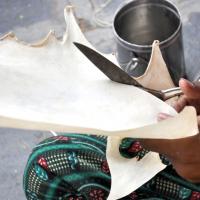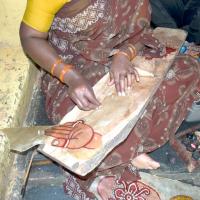Design Gallery
Puppet Making
by
The legacy of this craft can be traced back to 200 years ago to an ancient folk world. Indian tradition and religion has had a significant influence on leather-puppetry, this has been evident from its mention inthe two great Hindu epics- the Mahabharata and the Ramayana. These have been an integral cherished part of the craft of Southern India. The art form offers a splendid history of the region. A consistent triangular relationship exists between the three words often used in this art form of leather-puppetry “Killekyatha” and “Bangarakka”. These two were well known communities of Karnataka a few decades ago. Its origin can be traced back to the pre-historic times.
Vegetable colours were earlier used but photo colours are now used as these colours are readily available. The puppet sizes range from 3 inches to about 6 feet. They are used as shadow puppets. They have a wider range of products- from lampshades to door hanging and wall hangings. In Nimmalakunta about 60 families are engaged in this craft. They depict stories related to the Hindu Mythology such as Ramayana and Mahabharata . The puppets are heavily decorated. The theatres where these puppet shows are performed are known as Tolubommalata. These artisans migrated from Maharashtra to Andhra Pradesh during the Maratha rule. The themes are mostly based on mythological epics like Satisulodhana and Dasavatra.























